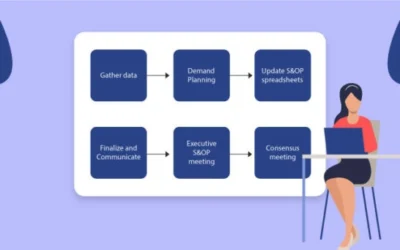An Ultimate Guide to Outbound Sales.
Outbound sales strategy has generated a bad rapport and so has taken a step backward in the past few years. Now, the complicated inbound sales process, which generates passive leads, has become the chief strategy. Outbound sales are now outdated and considered to generate non-significant results. However, this is not true.
Though inbound sales tactics are successful, outbound sales too have substantial value. For, it can increase your brand awareness and bring in many leads within a short duration, if done right. But if done wrong you would not only be wasting your resources but also harming your reputation.
So, go through this ultimate guide to outbound sales to know what is outbound sales, how it varies from inbound sales, its importance and advantages, the process, how to develop an effective outbound sales strategy, and more. Gaining sound knowledge in this regard will help you create value for your brand and prospects via outbound sales.
What are Outbound Sales?
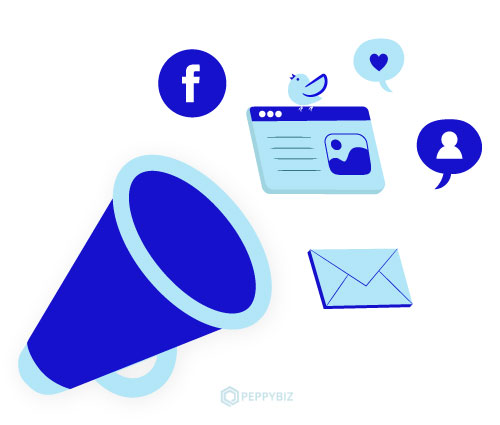
Outbound sales are the process where your brand reaches out to potential customers to deliver sales pitches. Some examples are radio ads, cold calls, tradeshows, and direct mail. Its distinctive feature is that your sales reps are contacting leads rather than leads approaching you.
This differentiates it from inbound sales where your prospects come to you (most probably due to your efficient content marketing).
Outbound Vs Inbound Sales
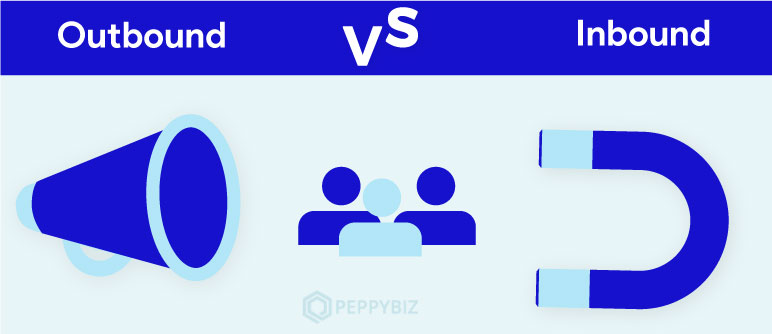
It isn’t right to think of the two approaches as outbound vs inbound. For, both the approaches have their advantages. Hence, often brands benefit from adopting a combination of both. As mentioned in the previous section, the principal difference between outbound and inbound sales relies on who initiates contact- the seller or the buyer.
Outbound sales strategies are proactive, whereas, inbound sales techniques seek to prompt the prospect to make the first move. In inbound sales, the brand takes measures to ‘warm up’ a potential customer for purchasing via blog posts, Facebook ads, emails, etc. It generates awareness of your brand among the audience.
In outbound sales, a sales rep makes contact with prospects. A study says that outbound strategies bring 55% of leads, whereas inbound sales generate 27% only. The same study also found that 66.7% of brands aren’t reaching themselves to enough prospects.
Importance of Outbound Sales
Outbound sales aren’t something that should be traded for your inbound strategies. Outbound strategies are important as they let you control communication between your prospects and you. You have the flexibility to decide when to initiate contact or make a follow-up.
Another thing is that you have complete control over deciding whom to communicate with. You can categorize your prospects and choose those who you think are the best to target. This way, you won’t be wasting time, effort, and money on prospects that aren’t good leads.
Further, with outbound sales marketing, you can get an instant idea of how your campaign is performing. Additionally, you can also measure the revenue generation of your campaigns in advance. There are several tools for predicting whether or not a prospect will convert over time.
This, along with sales forecasting, can help you set realistic objectives for your outbound sales team.
Advantages of Outbound Sales
As discussed earlier, outbound and inbound approaches have their own set of benefits. This also means that outbound sales provide things that inbound strategies don’t usually include. These include
- Mass targeting via segmentation: You can segment your market based on their interests and then mass target each category with specific messages.
- Laser-targeted reach: Today’s extensive use of the internet by people gives you loads of info about each of your prospects. Such profiling allows you to have a highly targeted reach.
- Effective lead generation: If done properly, outbound sales can generate leads successfully.
- Individual contact with ideal customers: You are not only able to filter out ideal prospects, but also contact them individually. This facilitates high personalization.
- Instant feedback and measurable outcomes: The strategy allows you to know how well your campaign is performing.
- The rarity of negative chain reactions: Unlike inbound sales, with outbound sales negative responses cannot be seen by other prospects. This makes negative chain reactions a rare thing.
- Command over the marketing and selling pace: Outbound marketing and sales let you control the pace at which you can market and sell to your prospects. You can decide this following how well your campaign is working in your favor.
These merits of outbound sales make it a dynamic channel for revenue generation. You start contacting your potential customers rather than waiting for them to reach you, and you immediately get to know whether or not your approach is working in your favor.
Further, since the marketing and selling pace is in your control, you can decide when to scale the process. That is, you can increase sales by contacting more prospects.
Thus,exist you can make the most out of your sales process. by having a blend of inbound and outbound sales approaches
An Overview of the Outbound Sales Process

In outbound selling, sales reps contact customers and prospects to sell their products and services. They utilize a blend of emails, cold calls, and social media messaging to generate leads and drive sales. Every firm employs a different outbound sales process to help it reach the ideal prospects and convert leads into customers.
Here is a simple outline of the outbound sales process.
- Identifying target customers
- Generating leads
- Reaching out to leads and qualifying them
- Making sales calls or meeting them
- Closing the deal
Opposed to the widespread belief that outbound sales exists no more, it is still alive, active, and progressing along with the present-day buyer.
Techniques commonly used in outbound sales
Some of the marketing techniques usually used in outbound sales are-
- Cold calling: You make unsolicited meetings with or phone calls to your prospects to deliver your sales pitch.
- Email marketing automation: You send personalized messages to prospects based on their recent online or offline actions.
- Cold emailing: You send unsolicited emails to prospects without any previous contact.
In all methods of outbound marketing, people are often likely to raise common objections. Your sales rep should be ready to face and aptly respond to those with respect. Train your reps to stay on track and in control while keeping a natural tone and pace when they are cold calling.
A study by Telfer found that “for every increase in a minute in call duration, there are six times better odds of success with the lead.” One way to increase the call duration is to get them talking. So, go for open-ended questions rather than those that would bring a “yes” or “no” answer. This would open the opportunity for you to share more about your products or services.
Likewise, you should let the prospect talk. You should not hurry to complete his or her sentence. Making assumptions and interruptions can end the call quickly. You can find many such sales tips by reading other blogs on our site.
Industries that employ outbound sales
As with the case of inbound sales, outbound sale strategies aren’t specific to one industry, but generally, work well for brands that
- Deal with expensive or high-consideration products/services.
- Have lengthy sales cycles.
- Reward commissions to their sales reps.
- Have a clear target.
- Target an audience that has no objection to receiving cold calls, emails, or direct messages.
Additionally, outbound strategies also work well for smaller companies and startups with more time than money.
Things that go into a Successful Outbound Sales Strategy
Following are the things that you should include in your outbound sales strategy to be successful.
1. Build your digital presence
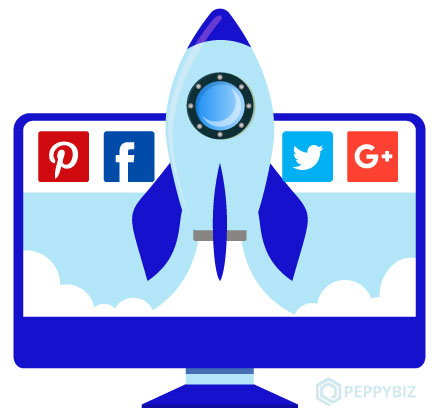
Upon finishing your cold call or reading your email, your prospects will immediately research you online if they like your offer. They’ll go through your website, check out your references, and look at your social media profiles. When this happens, you should ensure that all your digital channels are well-groomed and attractive. They should portray you as a competent professional in your field with many happy clients.
2. Prioritize audience research
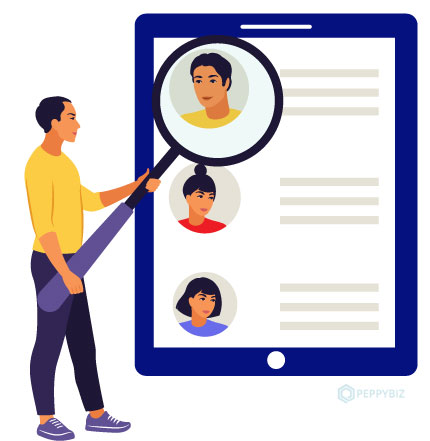
Your sales reps have to be well-equipped with contextual info about the buyer and his business before getting in touch with him. This is what distinguishes the trendy outbound sales from its outdated version. Before the advent of the internet, sales reps would gather as many leads as they can and cold call them. They have no techniques to target specific leads.
But today, you can collect all data found online and culminate those using tools to filter out those high-value leads, thereby reducing the average sales cycle and increasing customer acquisition. Embracing advanced technologies such as chatbots, social selling, etc. to source your prospects’ data can help you in this regard.
3. Personalize your message
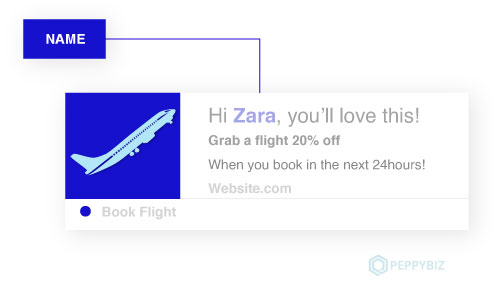
People tend to become frustrated when they receive irrelevant emails. Personalization, therefore, matters a lot. No matter whether it is a greeting on a cold call, the first sentence of a social media connection request, or an email’s subject line, you have to personalize it.
You need to relate your product/service to your prospect’s needs right from the beginning. For instance, if you found a potential lead in a Facebook group, you could start your message like this to attract their attention- “Hi Sarah, I came across your comments in the Baby and Mom group on Facebook– I completely understand your concerns, and we have the right solution for it!”
4. Do follow up
When a prospect softly refuses your offer or isn’t responding to your email, you shouldn’t quit straight away. Studies say that people can dismiss an offer up to four times before finally accepting it. So, have a follow-up process and adhere to it.
You can employ sales and marketing automation software for executing your follow-up campaign to those prospects who said “no” to the initial message. It would be wise to try different tactics such as incorporating videos, GIFs, and other visual media to gain the attention of your prospects.
5. Always be closing
Any type of outbound sales technique can be lengthy. It can go on continuing with back and forth conversations. Therefore employ some strategy for arriving at a conclusion and closing the sale. You should close the sale with a strong Call to Action.
Give them a solid reason why they should buy from you. Offering time-sensitive discounts, holiday specials, limited offers, and making better offers are some great ideas that could help you close the sale.
Final Words
Outbound sales can generate high-value leads. And it lets you easily capture that section of your market that has high purchase intent. If done properly, it can boost your revenue this way. So, take enough time for customer profiling and segmentation before you start your actual outbound marketing.
This will also help you save loads of time, effort, and resources that you would otherwise be spending on unprofitable leads.


